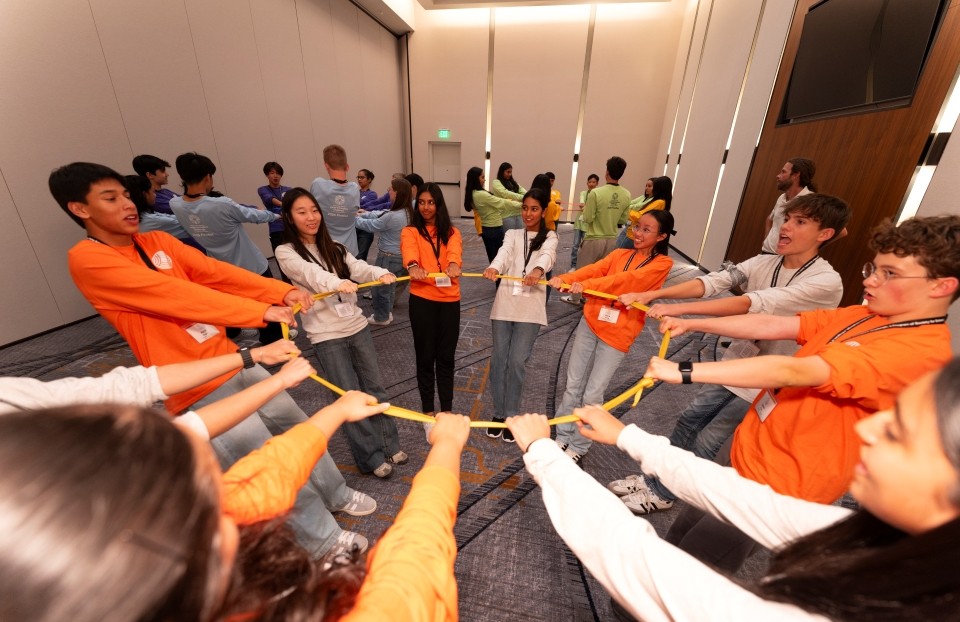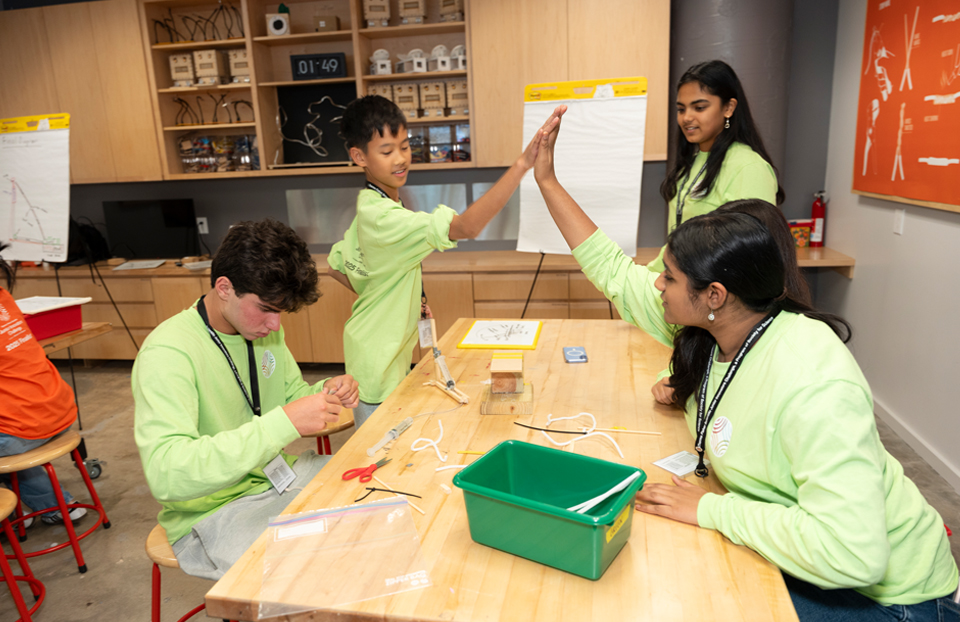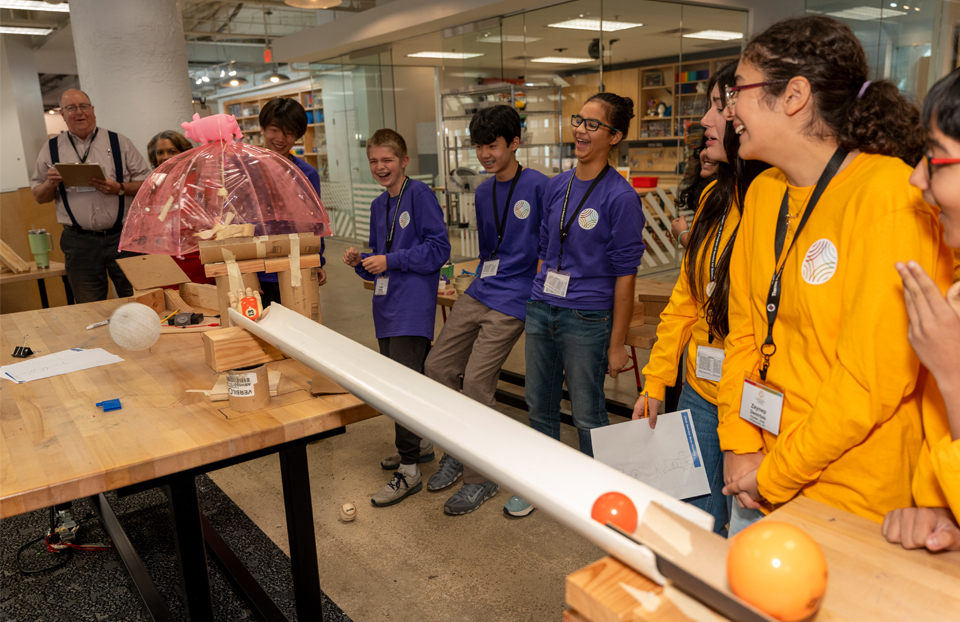STEM Action Grants, Thermo Fisher JIC
Toxic Taps: STEAM Forward! Academy leads Thermo Fisher JIC finalists in public health mystery
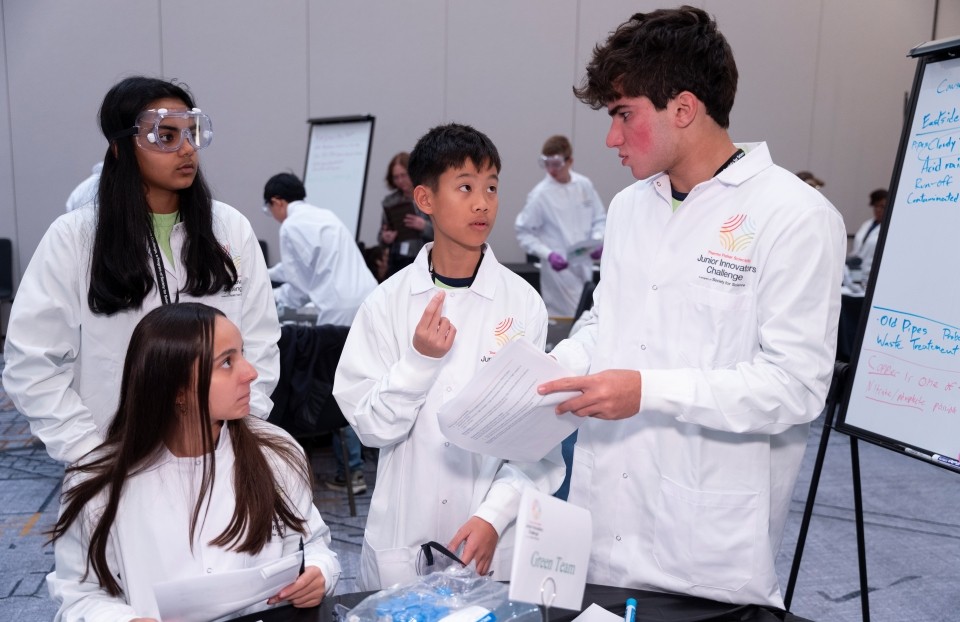
After presenting their projects to the judges and wowing the crowd at the Science and Engineering Project Showcase, the Top 30 Thermo Fisher Scientific Junior Innovators Challenge (Thermo Fisher JIC) finalists were ready to take on their first challenges.
Though this year’s cohort gathered in Washington, D.C., the competition’s first day of challenges whisked them away to the fictional town of Eureka Heights, where a high-stakes mystery awaited them. Led by STEAM Forward! Academy (SFA), a Society for Science STEM Action Grantee with the mission of nurturing curiosity and collaboration through interactive workshops, the finalists stepped into the role of public health investigators.
SFA founder and executive director Jeanita Pritchett Clay set the stage: “We’ve got a problem. Something in Eureka Heights is making people sick. No one knows exactly why, but most people suspect it has something to do with the water.”
An introductory video played for the finalists like a news report, featuring interviews with Eureka Heights residents who described brown water coming from their taps as well as health issues ranging from skin irritation to gastrointestinal issues. The report concluded with a plea from the mayor: “We are looking for innovators and the brightest minds to help solve this crisis.”
The Junior Innovators set to the task. Equipped with water samples from homes, businesses and treatment plants across Eureka Heights, they set out to uncover possible sources of the problem. Thermo Fisher Scientific provided water quality testing equipment for the challenge, and their scientists were on the scene to show the finalists how to use the equipment. The finalists also had access to a trove of community data such as infrastructure maps, official memos and testimony from residents, helping them connect how social factors of the crisis intersect with environmental origins.
The six finalist teams adopted different strategies to pinpoint the possible sources and causes of the invisible menace threatening Eureka Heights.
The purple team focused on listening, zeroing in on residents’ comments and concerns to better understand the community’s challenges. Meanwhile, the orange team focused on geography, attempting to understand every variable of the landscape.


The gold team carefully considered how socioeconomic factors could be driving the public health crisis. With limited time to test all their samples, the green team made a point to be as meticulous as possible with each step of their analyses.
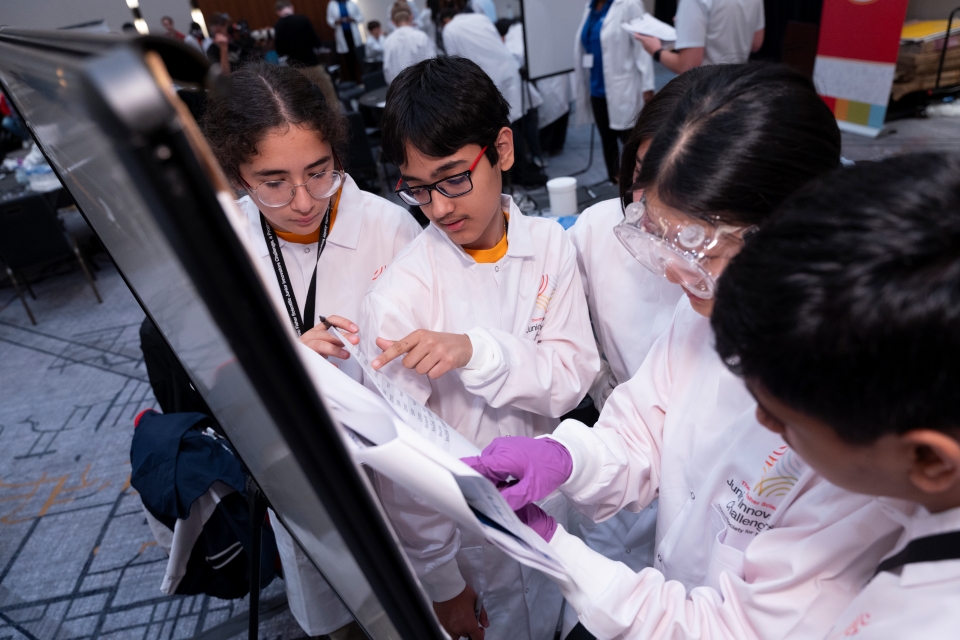

To address all the dimensions of the crisis, the silver team assigned its members roles such as forensic scientist, environmental justice organizer and public health advocate, with each taking the lead on an important aspect of the problem. Communication was key for the blue team. In addition to collaborating with each other during the challenge, they also catalogued their findings visually to effectively track, and later present, the full breadth of their results.

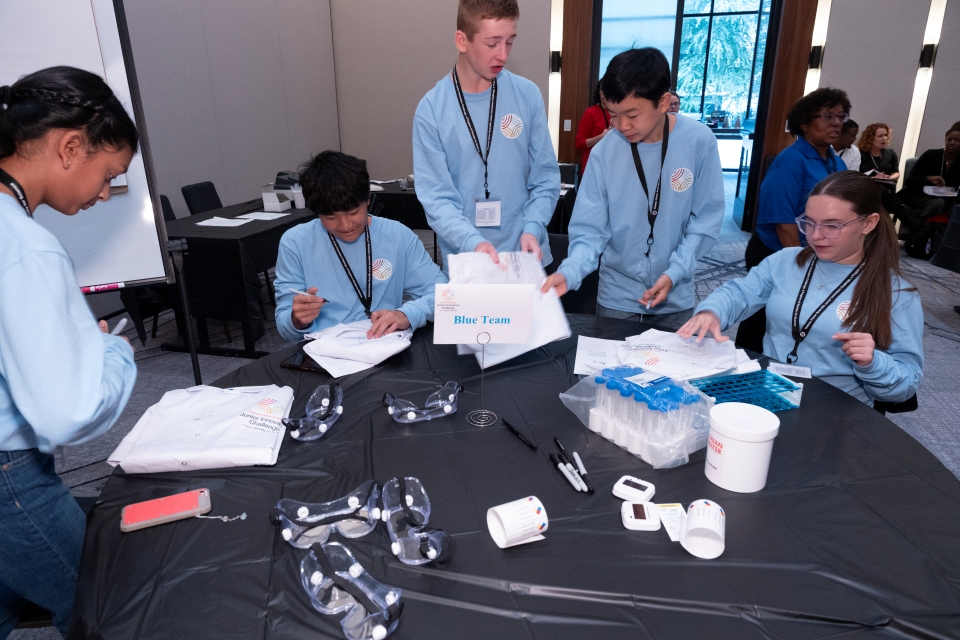
After completing their investigations, each team presented their findings to the judges in a town hall format. Sharing their process, conclusions and recommendations to reverse the crisis, the finalists ensured that solutions were in sight for the people of Eureka Heights.
Though each team presented independently, one common refrain emerged: if they had more time, they would have liked to collaborate with the other teams to combine their findings into even stronger recommendations. In this challenge, finalists discovered firsthand how collaboration can drive STEM impact.
